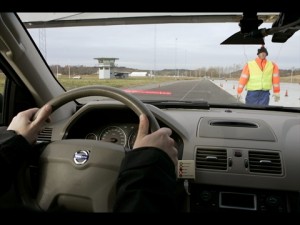After years of steady decline there are some disturbing signs that the downward trend in traffic fatalities may be over. With reports already suggesting vehicle deaths were up for the first part of the year, a new study shows a sharp, 4% increase in pedestrian fatalities, as well.
The upturn in pedestrian deaths came in 2010, the most recent year for which data are available, but it marks the first increase since 2005 – a point at which all motor vehicle-related fatalities began to tumble sharply.
A total of 4,280 pedestrians were killed in vehicle-related incidents, according to the National Highway Traffic Safety Administration, another 70,000 injured. In 2010, pedestrian deaths accounted for 13% of all traffic fatalities. That compared with 11% between 2002 and 2007. That reflects both the increase in pedestrian crashes as well as the decline in overall motor vehicle fatalities.
Nearly three of every four pedestrian fatalities occurred in urban settings, and 79% happened at non-intersections.
“Most people are pedestrians at some point in their day. That’s why we’re reminding the public to take precautions and use crosswalks or intersections whenever possible and wait for a gap in traffic that allows enough time to cross the street,” said NHTSA Administrator David Strickland in a statement accompanying the new report.
About seven in 10 pedestrian fatalities occurred at night, when it becomes more difficult for drivers to see, especially if a person on foot is crossing out of a marked intersection and wearing dark clothing.
Children age 15 and younger accounted for 7% of pedestrian fatalities during 2010, according to NHTSA, and 23% of pedestrian injuries. Those older than 65 made up another 19% of the fatalities.
The news of increased pedestrian fatalities comes just weeks after NHTSA released preliminary information showing that overall motor vehicle fatalities rose during the first quarter. Exactly why the trendline has reversed is unclear. Both could be statistical anomalies, but some experts warn that the rising death toll might also reflect what U.S. Transportation Secretary Ray LaHood has called the “epidemic” of distracted driving.
Distractions are already being blamed for about one in 11 U.S. motor vehicle-related fatalities.
Indeed, following the release of the 2010 report, LaHood stressed that even when crossing in a marked intersection a pedestrian should “never assume a driver sees you.”
Federal regulators are focusing increased attention on pedestrian collisions – as their counterparts in Europe already have. There, manufacturers are required to build in safety systems designed to reduce the risk of injury when a vehicle strikes a pedestrian.
Most vehicles have been redesigned to provide additional energy-absorbing crush space beneath the hood. Others, such as Jaguar, have introduced more high-tech alternatives, such as pyrotechnic hoods that automatically raise up several inches when the vehicle senses a pedestrian impact. Volvo has developed an exterior airbag that wraps around the windshield to cushion the impact to a pedestrian.
The Swedish maker was also first to introduce a system, dubbed Pedestrian Detection, that could detect a potential pedestrian collision and bring the vehicle to a sudden halt at speeds under around 20 mph. Similar systems are now being introduced by a number of other manufacturers.
Meanwhile, BMW has added an optional Night Vision system on several vehicles that can highlight pedestrians – and animals – in the road. And Honda has redesigned its hood and wipers to further reduce pedestrian injuries.
The NHTSA could eventually require similar approaches in the U.S., as well as softer bumpers that would also help absorb the forces of a pedestrian impact – though that could result in more parking lot damage in low-speed collisions.
On a more low-tech front, many states have toughened driving rules in densely populated areas and have increased the use of warning signs.
The states with the highest number of pedestrian deaths in 2010 were California, at 599, Florida at 487, Texas at 345, New York at 303, and Arizona at 146. They have some of the nation’s largest urban areas – and in the case of Florida and Arizona, some of the largest elderly populations.
The states with the fewest number of recorded pedestrian deaths were Wyoming at 3, Vermont with 4, Alaska at 6, North Dakota at 7, and Rhode Island, Nebraska, Montana with 8 each.

